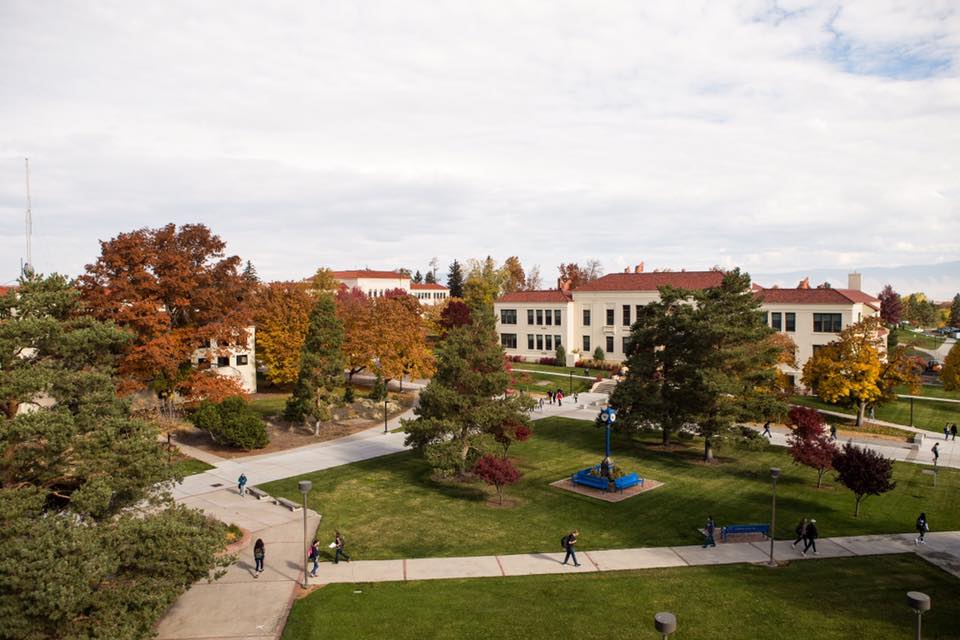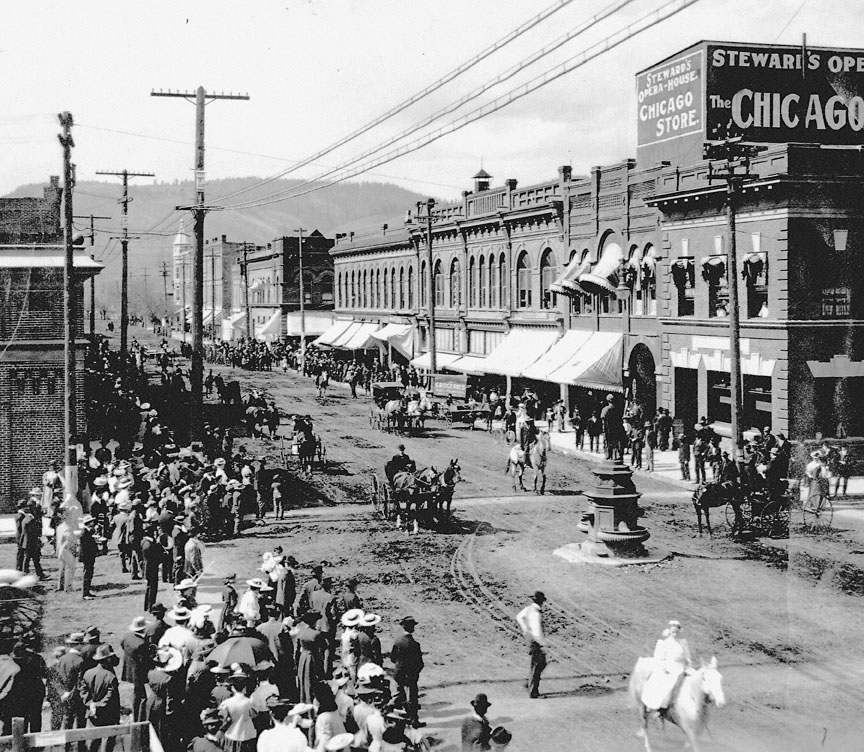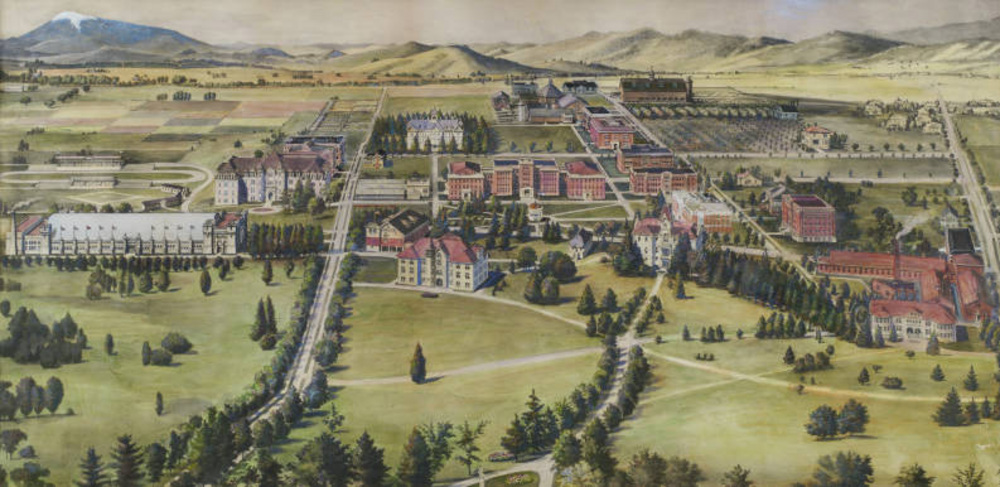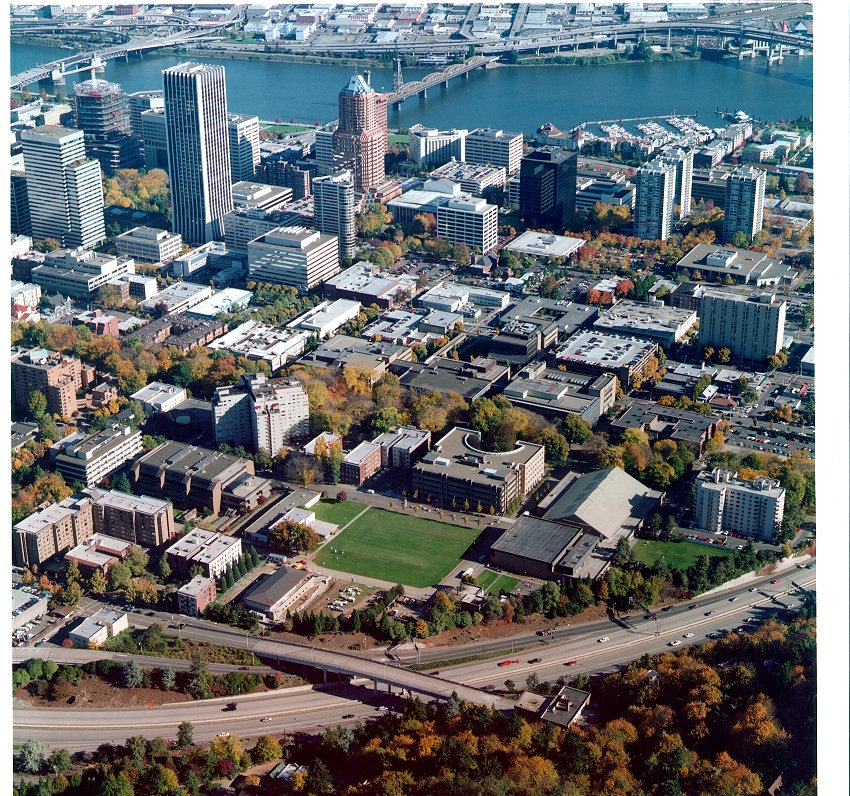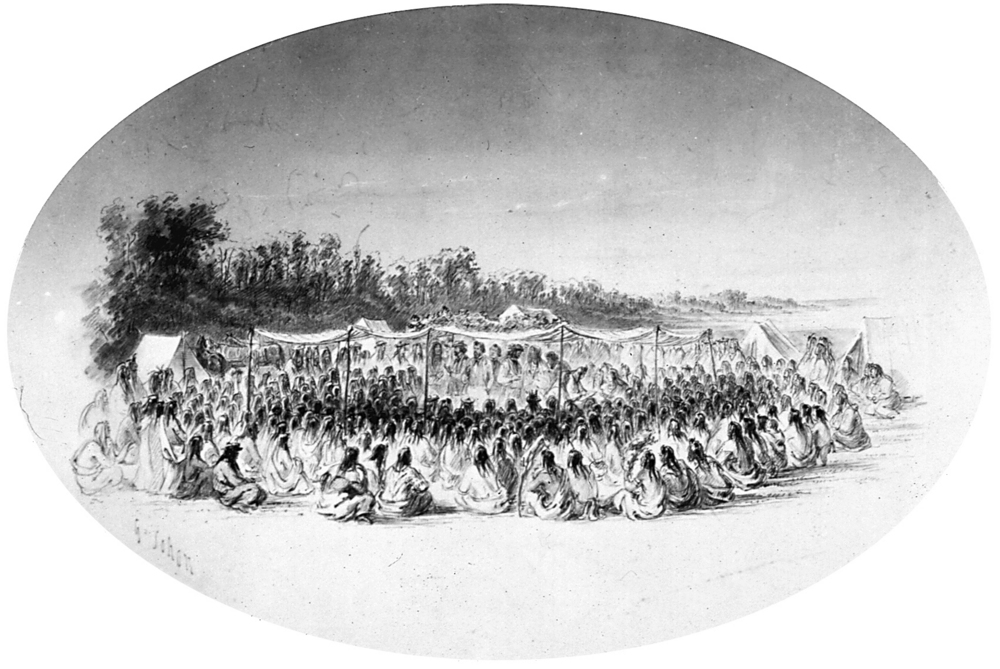Eastern Oregon University, the only state university in northeastern Oregon, is located on a promontory on the southwest edge of the City of La Grande. The campus overlooks the Grande Ronde Valley, where Cayuse, Umatilla, Walla Walla, and Nez Perce have traditional hunting, fishing, and gathering grounds. For almost a hundred years, the nearby Blue and Wallowa Mountains have served as a laboratory and recreational resource for EOU students and staff. In 2018 the institution was designated Oregon’s Rural University and serves as an educational, cultural, and economic engine for agricultural and other rural places throughout the state.
In 1925, Oregon Governor Walter Pierce sponsored a bill to establish a normal school in eastern Oregon. Pierce, a resident of Union County, recommended that the legislature establish Eastern Oregon Normal School in La Grande, where community members donated land and money for the new institution. The Oregon Normal School Board of Regents agreed, and the first building of Eastern Oregon Normal School was dedicated on June 5, 1929. The building, designed by architect John V. Bennes in the Italian Renaissance style, survives as Inlow Hall, EOU’s administration building.
Over two hundred men and women enrolled in the school’s first two-year certificate program in teacher education. Student clubs, organizations, and student government were established during EON’s first year. Male students competed in intercollegiate athletics that included football, basketball, baseball, and track; and women competed in club sports, including basketball, volleyball, and hiking.
Harvey E. Inlow, the first president of EON (1929–1937), helped establish the school’s academic standards, guidelines, traditions, and student-centered philosophy. Early faculty included Bob Quinn, who taught physical education, health, and geography and coached all athletic teams. Amanda Zabel taught English and drama, and Ralph Badgley taught math and science. All have buildings on the EOU campus named for them.
In 1932, EON was fully accredited as a teacher training institution by the U.S. Office of Education. The academic program was supported by the 1935–1936 addition of the J. H. Ackerman facility, a joint project of the State of Oregon, the La Grande School District, and the WPA. The building included a two-story elementary school, a library, a lunchroom, and an adjoining state-of-the-art gymnasium, which at the time was the largest such building in eastern Oregon. Also with WPA funding, construction began on Dorion Hall, a women’s residence, in August 1938. The hall, which was opened to students in 1939, had living spaces for sixty-four women and a live-in nurse.
While the college had suffered budget cuts, deferred maintenance, construction delays, tuition increases and salary cuts during the Depression, it had performed better than national trends with support from the La Grande community and the Oregon State Higher Education Department. Students who graduated with elementary teaching credentials during this time had nearly 100 percent job placement. By the early 1940s, the college had 200 students.
In 1939, the institution was renamed Eastern Oregon College of Education. Roben Maaske, who was named EOCE president that year, guided the institution through the war years. EOCE’s proximity to the U.S. Army airfield in Pendleton made it a good location for an Army Air Force College Training Detachment. In 1943, students in the U.S. Cadet Nursing Corps and the Army Air Force Training Detachment took classes on the EOCE campus. Enrollment jumped by 28 percent at the end of the war, largely because of veterans returning to school on the GI Bill. EOCE was one of only four Oregon colleges with a veterans guidance center and is now designated as a gold-level Military Friendly institution.
In 1947, the student union, Hoke Hall, opened in a building that had been relocated from Pendleton (a new Hoke Hall was built in 1973), and the University Library opened in 1951. But in the late 1940s and early 1950s, EOCE experienced a persistent decline in enrollment and began an effort to recruit students from regional high schools. By 1959, EOCE had seven buildings and 800 students. The school offered bachelor’s degrees in general studies and a Master of Science in education. The school’s name was changed to Eastern Oregon College in 1956 and to Eastern Oregon State College in 1973. In 1997, the name was changed once again to Eastern Oregon University, reflecting the growth in its curriculum and advanced degree programs in education, business administration, and creative writing.
Under the leadership of David E. Gilbert, EOU’s longest serving president (1983–1998), the university began offering higher education opportunities to remote learners. Regional offices were opened in several Oregon cities, often on community college campuses, under the administration of the EOU Office of Regional Outreach and Innovation. By 2022, the university offered twenty-two online degrees and had nationally recognized programs in early childhood education, business administration, fire science, accounting, English, psychology, business, and education.
In the fall of 2021, EOU had approximately three thousand students enrolled in thirty-seven degree and pre-professional programs that offered classes on campus, online, and at eleven regional centers. Sixty-five percent of those enrolled were from rural areas, 32 percent were first-generation students, 48 percent of new freshman were from eastern Oregon, and 27 percent were international or culturally and ethnically diverse students. The 121-acre campus had more than twenty-six buildings, including academic facilities and labs, athletic venues, student housing complexes, and student support and recreational facilities.
In 2022, EOU offered certificates, undergraduate and graduate degrees, and professional and pre-professional programs through four internal colleges and partnership programs with Oregon State University (agriculture) and the Oregon Health Sciences University (nursing). The university’s fine and performing arts programs host public school events in art, music, and science and provide cultural opportunities for local communities. Student research is highlighted at an annual Spring Symposium, and original student work is published in the university’s literary and science journals and displayed in the Nightingale Gallery. The EOU Mountaineers compete in fifteen men’s and women’s athletic sports under the auspices of the National Association of Intercollegiate Athletics.
EOU’s governing board was established in 2015, with trustees appointed by the Oregon governor and confirmed by the Oregon Senate. Since 1964, the EOU Foundation has cultivated philanthropic support for the university. Governed by an independent board, it supports the university’s mission with scholarships, staffing, and educational and capital project funding.
Prominent alumni of EOU include David W. Panuelo, president of the Confederated State of Micronesia; Don Gray, artist and muralist; Milburn Holmes, pilot and co-founder of the Navy Fighters Weapons School (Top Gun); Dr. Laurie Marker, founder and executive director of the Cheetah Conservation Fund; Jesse Jones, composer and conductor, recipient of the Rome Prize and Guggenheim Fellow; and Sky Fitzgerald, documentary film director, producer, and Academy Award nominee.
-
![]()
Eastern Oregon Normal School grand opening, 1929. Inlow Hall. Photo by Mae Stearns.
Courtesy Eastern Oregon University Digital Archives
-
![]()
Campus view, Eastern Oregon University.
Courtesy Eastern Oregon University Advancement
-
![]()
Campus view, Eastern Oregon University.
Courtesy Eastern Oregon University Advancement
-
Library Main Reading Room, Eastern Oregon University.
Courtesy Eastern Oregon University Advancement
-
![]()
Student in library, Eastern Oregon University.
Courtesy Eastern Oregon University Advancement
-
Badgley Hall, Eastern Oregon University campus.
Courtesy Eastern Oregon University Advancement
-
![]()
Quinn Coliseum, Eastern Oregon University.
Courtesy Eastern Oregon University Advancement
-
![]()
Stadium and track, Eastern Oregon University.
Courtesy Eastern Oregon University Advancement
-
Zabel Hall, Eastern Oregon University.
Courtesy Eastern Oregon University Advancement
-
![]()
Ackerman Hall, Eastern Oregon University.
Courtesy Eastern Oregon University Advancement
-
Gilbert Event Center. Previously Ackerman gymnasium and remodeled..
Courtesy Eastern Oregon University Advancement
Related Entries
-
![La Grande]()
La Grande
La Grande, the seat of Union County, is nestled in the eastern foothill…
-
![Oregon State University]()
Oregon State University
Oregon State University (OSU) traces its roots to 1856, when Corvallis …
-
![Portland State University]()
Portland State University
Located in downtown Portland, Portland State University is Oregon’s urb…
-
![Southern Oregon University]()
Southern Oregon University
The origins of Southern Oregon University, situated on a leafy hillside…
-
![Walla Walla Treaty Council 1855]()
Walla Walla Treaty Council 1855
The treaty council held at Waiilatpu (Place of the Rye Grass) in the Wa…
-
![Western Oregon University]()
Western Oregon University
Western Oregon University, one of Oregon’s oldest public institutions o…
Map This on the Oregon History WayFinder
The Oregon History Wayfinder is an interactive map that identifies significant places, people, and events in Oregon history.
Further Reading
Hunn, Eugene S., E. Thomas Morning Owl, Phillip E. Cash Cash, and Jennifer K.Engum. Caw Pawa Laakni, They Are Not Forgotten: Sahaptian Place Names Atlas of the Cayuse, Umatilla, and Walla Walla. Pendleton, Ore.: Tamastslikt Cultural Inst., 2014.
Evan, John W. Powerful Rockey: The Blue Mountains and the Oregon Trail, 1811-1883. Enterprise, Ore.: Pika Press, 1991.
Farrester, Rebecca L. “History of Eastern Oregon Normal School: The First Ten Years 1929 to 1939. Unpublished Senior Thesis. Eastern Oregon University, 2000.


